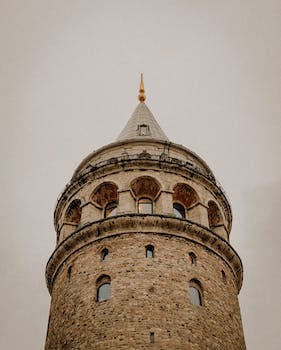

-
Table of Contents
Dispelling the Parallels: A Comparative Analysis of Trump and Hitler.
Introduction
Introduction:
Comparing political figures to Adolf Hitler, the infamous dictator responsible for the Holocaust and World War II, is a serious matter that should not be taken lightly. In recent years, there have been claims drawing parallels between Hitler and former US President Donald Trump. However, it is crucial to approach such comparisons with caution and skepticism. This article aims to dispel the parallels between Trump and Hitler, highlighting the importance of distinguishing between historical events and contemporary politics.
Historical Context: Understanding the Differences between Trump and Hitler
Comparing Trump and Hitler: Dispelling the Parallels
In the realm of political discourse, it is not uncommon for individuals to draw comparisons between leaders of different eras. One such comparison that has gained traction in recent years is the comparison between former President Donald Trump and Adolf Hitler, the infamous dictator of Nazi Germany. While it is understandable that people may find certain similarities between the two figures, it is crucial to approach such comparisons with caution and a deep understanding of historical context.
To truly comprehend the differences between Trump and Hitler, it is essential to delve into the historical context surrounding their rise to power. Adolf Hitler emerged in a post-World War I Germany, a nation grappling with economic turmoil, political instability, and a deep sense of humiliation following the Treaty of Versailles. Hitler capitalized on these conditions, exploiting the German people's grievances and offering them a scapegoat in the form of Jews and other minority groups. His rise to power was marked by violence, propaganda, and the establishment of a totalitarian regime.
In contrast, Donald Trump's ascent to the presidency occurred in a vastly different historical context. The United States, a stable democracy with a strong economy, was not facing the same level of crisis as Germany in the 1930s. Trump's rise to power was propelled by a combination of factors, including a disillusionment with the political establishment, a desire for change, and a skillful use of media and communication platforms. While his rhetoric may have been divisive and controversial, it is crucial to recognize that Trump did not employ the same tactics of violence and repression as Hitler.
Another important distinction between Trump and Hitler lies in their respective ideologies. Adolf Hitler was the architect of a racist and anti-Semitic ideology that sought to establish a master race and eradicate those deemed undesirable. His policies led to the systematic persecution and extermination of millions of innocent people. In contrast, Trump's ideology, if one can even define it as such, was centered around a populist and nationalist agenda. While his policies and rhetoric may have been polarizing, they did not advocate for the same level of hatred and discrimination as Hitler's.
Furthermore, the institutions and checks and balances in place in the United States prevented Trump from consolidating power in the same way Hitler did. The American system of government, with its separation of powers and robust democratic institutions, acted as a safeguard against any potential authoritarian tendencies. Trump faced significant opposition from both within his own party and from the broader public, which limited his ability to enact policies that could have undermined democratic norms.
It is also worth noting that the consequences of Hitler's actions were far more devastating and far-reaching than anything Trump achieved during his presidency. Hitler's reign resulted in the deaths of millions of people, the destruction of entire cities, and a global war that reshaped the world order. While Trump's presidency was marked by controversy and policy decisions that were widely criticized, it did not have the same catastrophic impact on a global scale.
In conclusion, while it is natural to draw comparisons between leaders of different eras, it is crucial to approach such comparisons with a deep understanding of historical context. The differences between Trump and Hitler are significant and cannot be overlooked. Understanding these differences is essential to dispel the parallels that have been drawn between the two figures. By doing so, we can engage in a more nuanced and informed discussion about the challenges and complexities of leadership in our modern world.
Political Ideologies: Analyzing the Contrasting Beliefs of Trump and Hitler

Comparing Trump and Hitler: Dispelling the Parallels
Political ideologies play a crucial role in shaping the beliefs and actions of leaders. In the realm of politics, few figures have been as controversial and polarizing as Donald Trump and Adolf Hitler. While some have drawn parallels between the two, it is essential to analyze their contrasting beliefs to dispel any misconceptions.
First and foremost, it is important to acknowledge that both Trump and Hitler were influential leaders who left a lasting impact on their respective nations. However, their political ideologies and beliefs diverged significantly. Trump, a businessman turned politician, advocated for a conservative agenda that focused on economic growth, deregulation, and national security. In contrast, Hitler, a dictator who rose to power in Germany during the 1930s, espoused a radical ideology rooted in racial superiority and expansionism.
One of the key differences between Trump and Hitler lies in their approach to governance. Trump, as the President of the United States, operated within a democratic framework, respecting the rule of law and the separation of powers. While his policies may have been controversial, he adhered to the principles of democracy and the Constitution. Hitler, on the other hand, dismantled democratic institutions, consolidated power, and established a totalitarian regime that suppressed dissent and violated human rights.
Another crucial distinction between the two leaders is their stance on diversity and inclusivity. Trump's political rhetoric often centered around immigration and border security, advocating for stricter immigration policies. However, he did not promote racial superiority or endorse discriminatory ideologies. In contrast, Hitler's Nazi regime propagated a racist ideology that led to the persecution and genocide of millions, particularly targeting Jews, Romani people, and other marginalized groups.
Furthermore, Trump's economic policies focused on deregulation and tax cuts to stimulate economic growth and job creation. While his approach may have been criticized for favoring the wealthy, it was rooted in the belief that a thriving economy benefits all citizens. Hitler, on the other hand, implemented a command economy that prioritized militarization and autarky, leading to economic instability and ultimately contributing to the devastation of World War II.
It is also important to consider the international relations aspect of their ideologies. Trump, as the leader of a global superpower, pursued an "America First" policy, prioritizing national interests and renegotiating international agreements. While this approach may have strained diplomatic relations, it was not driven by a desire for territorial expansion or global domination. Hitler, on the other hand, pursued an aggressive foreign policy that sought to establish a Greater German Reich through military conquest, leading to the outbreak of World War II.
In conclusion, while both Donald Trump and Adolf Hitler were influential leaders who left a lasting impact on their nations, it is crucial to analyze their political ideologies and beliefs to dispel any misconceptions. Trump's conservative agenda, adherence to democratic principles, and focus on economic growth distinguish him from Hitler's radical ideology, totalitarian regime, and racist policies. By understanding these contrasting beliefs, we can foster a more informed and nuanced discussion about political leaders and their ideologies.
Leadership Styles: Examining the Divergent Approaches of Trump and Hitler
Leadership Styles: Examining the Divergent Approaches of Trump and Hitler
When comparing leaders from different eras, it is essential to approach the subject with caution and objectivity. One such comparison that has been made is between former US President Donald Trump and Adolf Hitler, the infamous dictator of Nazi Germany. While both figures have been known for their controversial actions and rhetoric, it is crucial to dispel any parallels that may be drawn between them. By examining their leadership styles, it becomes evident that Trump and Hitler employed vastly different approaches.
One key aspect of leadership is the ability to inspire and motivate followers. Hitler was known for his powerful oratory skills, which allowed him to captivate audiences and rally support for his extremist ideologies. His speeches were filled with passion and charisma, often appealing to the emotions of his listeners. In contrast, Trump's leadership style relied more on his business acumen and ability to connect with his base through social media. While both leaders were effective in mobilizing their supporters, their methods and messages were fundamentally different.
Another crucial aspect of leadership is decision-making. Hitler was notorious for his autocratic style, making decisions without consulting others and often disregarding dissenting opinions. This approach led to disastrous consequences, as Hitler's unchecked power allowed him to implement policies that resulted in the deaths of millions. On the other hand, Trump's leadership style was characterized by a more decentralized decision-making process. He surrounded himself with advisors and relied on their expertise to inform his choices. While this approach had its own set of challenges, it demonstrated a willingness to consider different perspectives and avoid the pitfalls of unchecked power.
Furthermore, the way leaders handle criticism and dissent is indicative of their leadership style. Hitler was known for his intolerance of opposition, resorting to violence and suppression to silence dissenting voices. His regime was marked by a climate of fear and persecution, where anyone who dared to challenge his authority was swiftly dealt with. In contrast, Trump, despite his often combative nature, allowed for a more open exchange of ideas. While he was not immune to criticism, he did not resort to the same level of suppression as Hitler. This difference in approach highlights the divergent leadership styles of the two figures.
Lastly, a leader's ability to build and maintain alliances is crucial for their success. Hitler's aggressive expansionist policies and disregard for international norms led to the isolation of Nazi Germany. His leadership style alienated potential allies and ultimately contributed to his downfall. In contrast, Trump, despite his controversial policies, managed to maintain relationships with key allies such as Israel and Saudi Arabia. While his approach may have been unconventional at times, he recognized the importance of alliances in achieving his goals.
In conclusion, comparing Trump and Hitler's leadership styles reveals stark differences between the two figures. While both leaders were known for their controversial actions and rhetoric, it is essential to dispel any parallels that may be drawn between them. Hitler's autocratic decision-making, intolerance of dissent, and aggressive expansionist policies stand in stark contrast to Trump's more decentralized decision-making, tolerance of criticism, and focus on maintaining alliances. By examining these divergent approaches, it becomes clear that the comparison between Trump and Hitler is unfounded and misleading.
Q&A
1. Are there any valid parallels between Trump and Hitler?
No, there are no valid parallels between Trump and Hitler.
2. Is it accurate to compare Trump's actions to those of Hitler?
No, it is not accurate to compare Trump's actions to those of Hitler.
3. Are there any similarities in the ideologies of Trump and Hitler?
No, there are no similarities in the ideologies of Trump and Hitler.
Conclusion
In conclusion, comparing Donald Trump and Adolf Hitler and suggesting parallels between them is not supported by historical evidence. While both figures have been controversial and have employed populist rhetoric, their ideologies, political contexts, and actions differ significantly. It is important to approach historical comparisons with caution and rely on accurate information to avoid oversimplification and distortion of historical events.












